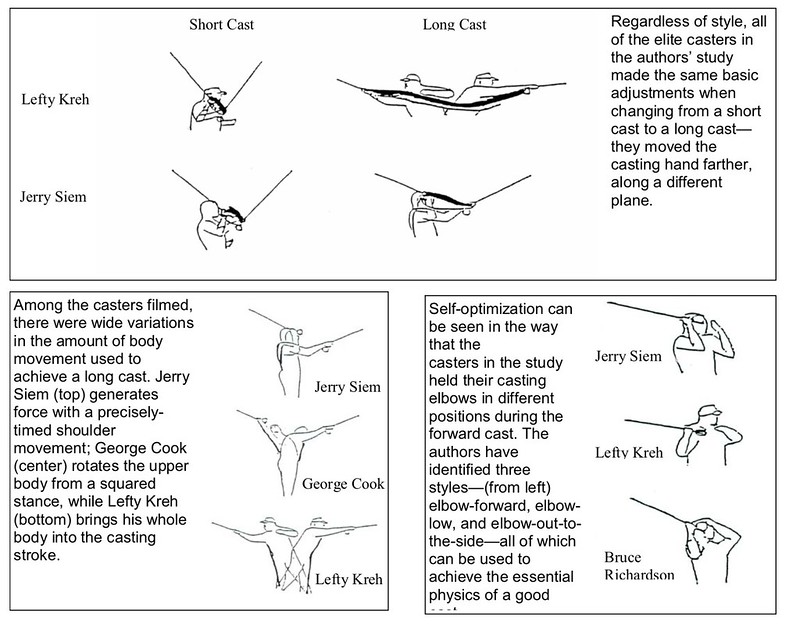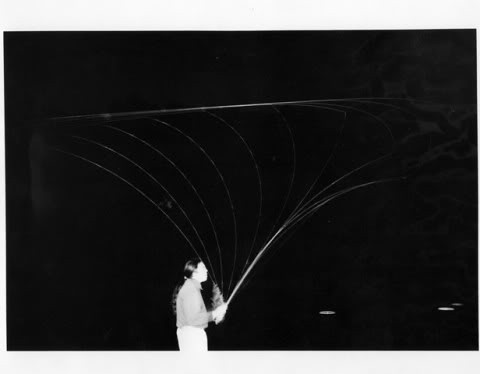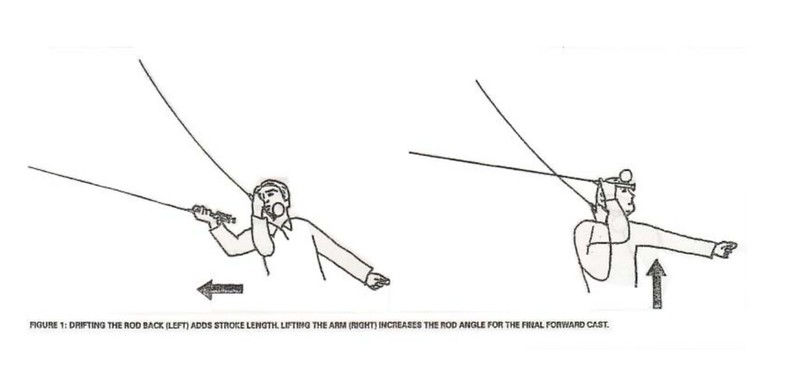If I were to measure the distance from my wrist to the ground at the end of my backstroke and the end of my forward stroke would the distance be the same, would it be greater at the end of the backstroke, or vice versa?
I always kinda thought it should be the same distance, but lately I've been re-watching some videos and it appears the wrist is lower at the end of the forward stroke.
When I watched a video of an extreme distance caster his wrist was way higher at the end of the forward stroke.
Basically, I'm trying to make about a 45 foot cast using the double haul, with a 9 foot, 5 wt rod. I practice in the street in front of my house with a small piece of yarn and a hook shank with the hook bend removed, if that makes a difference.
Thanks so much.
I haven't taken the time to read the replies, but all I know is the more you drop your hand/ wrist on the forward stroke the more the rod tip will drop and the loop of your fly line will widen. We strive for tight loops for distance and presentation.
Your casting stroke should generally follow a straight path,and a common mistake is to drop the wrist at the end of the back stroke.The final action of the forward cast (i.e.the stop) is the short action of dropping the wrist...similar to that of hammering a nail into an imaginary wall.Try the entire casting stroke with the dropped wrist action at the end without a rod and you'll get it.This becomes muscle memory,and any casting practise is productive,even if it's in your backyard.
In reply to dynaflow, I think you mean the
rod tip follows a straight path and not the casting stroke. The casting stroke must compensate for the bending and shortening of the rod (more on this below).
In reply to the all above posts, there is a common error and that is to assume that the relative position of the casting hand and or wrist relative to the ground at the start of the cast and end of the cast is always going to be the same at all casting distances AND with all casting styes.
It is human nature to assume that everyone casts a fly rod just like we individually cast a fly rod. That is simple not true.
In fact there are 3 main casting styles as noted by Al Kyte in his articles for the FFF and another article with Gary Moran. They are linked below. We will just discuss the two most common styles:
The Low Elbow style of Lefty Kreh and the the elbow forward style of the Rajeff brothers, the Borgers, Jerry Seim, Joan Wulff, and Steve Korich
Casting Styles
https://flyfishersinternational.org...ubstance and Style.Al Kyte and Gary Moran.pdf
Using the low elbow form of Lefty Kreh when he casts long, the hand is about the same distance above the ground. When he casts short, the casting hand is closer to the ground.
For the elbow forward style, the casing hand is lower at the end of the cast on both short and long casts, but relatively low on the shorter casts.
Fly casting is DYNAMIC and relative hand position and the casting stroke changes for distance and delicacy and accuracy. There is no fixed relative position of the casting hand to the ground and in fact there is no identical shape to the stroke path.
Here is the physical reality of fly casting. We are pulling a string with a FLEXIBLE lever through time and space. The fly rod is flexible and therefore BENDS during the casting stroke. Because the rod bends, the CHORD (distance from the rod tip to the casting hand) of the rod CONTRACTS and brings the ROD TIP CLOSER to the CASTING HAND. The fly rod SHRINKS!!!!! The CASTING STROKE must COMPENSATE for this shrinking rod by both TILTING the fly rod and ADJUSTING the stroke PATH so the ROD TIP follows a SLP (straight line path). Now add the variable of accuracy and casting distance.
Here are some illustrations of the rod stroke paths depending on the casting style and casting distance.
Illustration of hand positions of the elbow forward style for short casts from Jason Borger’s book.
Stop Motion of my friend Nelson Ishiyama using the Elbow Forward Cast
Long Cast Elbow Forward Style
Slow Motion of Kris Korich elbow forward style. Because his compact rod stroke uses the bending of the elbow joint and wrist joint,and the rotation of the humerus at the shoulder joint, the rod stroke forms a CONVEX ARC to compensate for the shortening of the fly rod chord.
Kris Korich
Steve Rajeff distance casting competition - high hand position on the final casting stroke
YouTube



